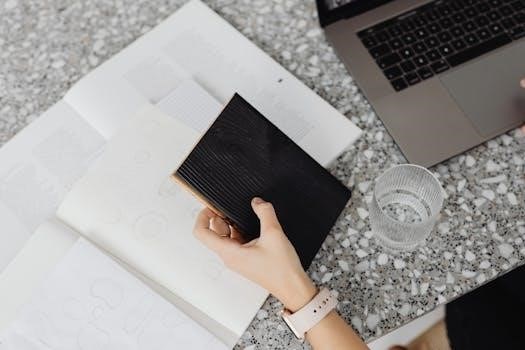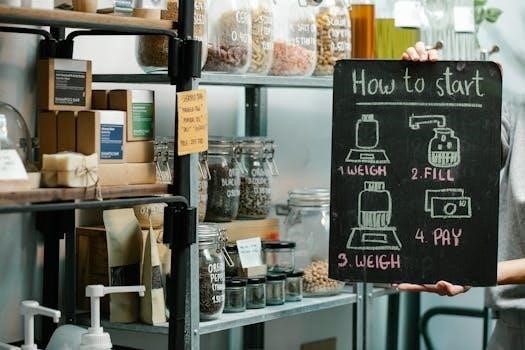Sutab Instructions⁚ A Comprehensive Guide
This guide provides a comprehensive overview of Sutab, a split-dose medication used to cleanse the bowel before a colonoscopy. We will walk you through each step, ensuring you understand how to properly prepare for your procedure using Sutab. Follow closely for the best outcome.
What is Sutab and Why is it Used?
Sutab is a prescription laxative specifically designed for bowel preparation before a colonoscopy. It’s formulated as a split-dose regimen, typically involving 24 tablets taken in two separate doses. Each dose usually consists of 12 tablets, accompanied by a specified amount of water to aid in the cleansing process.

The primary purpose of Sutab is to thoroughly empty the colon, ensuring a clear and unobstructed view for the gastroenterologist during the colonoscopy. A clean colon is crucial for accurate detection of polyps, lesions, or any other abnormalities. By effectively removing fecal matter, Sutab enhances the visibility of the colon lining, improving the overall quality and effectiveness of the colonoscopy examination.
Sutab offers a convenient tablet form, potentially making it easier for some patients to tolerate compared to traditional liquid bowel preparations. Adhering strictly to the provided instructions is paramount for successful bowel preparation and a successful colonoscopy.
Sutab Dosage and Administration⁚ Split-Dose Regimen
Sutab is administered using a split-dose regimen, meaning the total dosage is divided into two separate administrations. This approach is designed to optimize bowel cleansing efficacy. Typically, the first dose involves taking 12 tablets, followed by a specified amount of water, usually 16 ounces.
The second dose, also consisting of 12 tablets and 16 ounces of water, is taken several hours later, typically the morning of the colonoscopy. The exact timing of each dose is critical and should be precisely followed as outlined by your healthcare provider or the provided instructions. Completing both doses of Sutab, along with the required water intake, is essential for achieving adequate bowel preparation.
The split-dose approach helps ensure that the colon remains clear of stool throughout the procedure, improving visualization and the detection of any potential abnormalities. Strict adherence to the prescribed dosage and timing is crucial for a successful colonoscopy.
Detailed Step-by-Step Sutab Instructions
To ensure effective bowel preparation, follow these detailed steps for taking Sutab. First, open one bottle containing 12 Sutab tablets. Swallow each tablet with water, ensuring you consume the entire dose. After finishing the 12 tablets, drink 16 ounces of water within one hour. Thirty minutes after that, drink another 16 ounces of water.
For the second dose, repeat these steps approximately five hours before your colonoscopy. Open the second bottle of 12 tablets and swallow them with water. Again, drink 16 ounces of water within one hour, followed by another 16 ounces thirty minutes later.
It is crucial to complete all tablets and the required water intake at least two hours before your colonoscopy. Discard the desiccants found in the bottles. Remember to follow all instructions and maintain a clear liquid diet during the preparation period. If you have questions, consult your healthcare provider.
Dietary Guidelines Before, During, and After Sutab Use
Adhering to specific dietary guidelines is crucial for the effectiveness of Sutab and the success of your colonoscopy. Starting one day before taking the first dose of Sutab, you must follow a clear liquid diet. Clear liquids include broth, clear juice (apple, white grape), plain coffee or tea (no milk or cream), and clear soda.
Avoid solid foods, milk, cream, and any liquids with red or purple dye, as these can interfere with the colonoscopy. During the Sutab preparation, continue to consume only clear liquids to maintain hydration and aid in bowel cleansing. After completing the colonoscopy and receiving instructions from your healthcare provider, you can gradually reintroduce solid foods.
Begin with light, easily digestible options like toast, crackers, or soup. Avoid heavy, greasy, or spicy foods initially. If you experience any discomfort or nausea, return to a clear liquid diet until symptoms subside. Following these dietary guidelines ensures optimal preparation and a smoother recovery post-procedure.
Medication Considerations While Taking Sutab
When preparing for a colonoscopy with Sutab, it’s essential to consider how it may interact with your regular medications. Consult your healthcare provider for personalized guidance, but here are some general considerations.
Generally, you can take your daily medications up to two hours before the procedure unless instructed otherwise. However, certain medications may need to be adjusted or temporarily discontinued. For instance, patients taking opioid antagonists like Naltrexone should stop these before starting bowel preparation as directed by their doctor.
If you are diabetic, contact your primary care physician for specific instructions on managing your diabetic medications while on the clear liquid diet. Also, inform your healthcare provider about all medications you are taking, including prescription drugs, over-the-counter medications, and supplements. This ensures they can assess potential interactions and provide tailored recommendations.
Remember to confirm any medication adjustments with your doctor to avoid complications during the colonoscopy preparation.
Potential Side Effects and How to Manage Them
Like all medications, Sutab can cause side effects. Being aware of these and knowing how to manage them can help you have a more comfortable experience during your bowel preparation.
Common side effects include nausea, abdominal distension (bloating), vomiting, and upper abdominal pain. While these are usually mild, they can be unpleasant. To manage nausea, try sipping clear liquids slowly and frequently. If vomiting occurs, take a break from taking the Sutab tablets for about 30-60 minutes before trying again. If abdominal distension becomes uncomfortable, gentle movement might help relieve the discomfort.
Other reported side effects include gastrointestinal adverse reactions. Remember to discard the desiccants found in the Sutab bottles to prevent accidental ingestion.
If side effects become severe or unmanageable, contact your healthcare provider. They can provide guidance on how to alleviate symptoms and ensure you complete the bowel preparation safely. Be prepared to describe the side effects you are experiencing in detail. This will help your doctor give the best advice.

Important Precautions and Warnings for Sutab
Before taking Sutab, it’s crucial to understand the precautions and warnings associated with its use. This will help minimize potential risks and ensure your safety during the bowel preparation process.
First, ensure you inform your healthcare provider about all your existing medical conditions, especially kidney problems. This is essential for your safety. It is also important to disclose any medications you are currently taking, including prescription drugs, over-the-counter medications, and herbal supplements, as some medications may interact with Sutab.
Pay close attention to dietary restrictions and fluid intake guidelines provided by your doctor. Dehydration is a potential risk with bowel preparations, so it is important to stay well-hydrated by drinking the recommended amount of clear liquids.
If you experience any signs of an allergic reaction, such as rash, hives, swelling, or difficulty breathing, seek immediate medical attention. Carefully follow all instructions, and contact your healthcare provider if you have any questions or concerns.
Post-Procedure Instructions and Recovery
After your colonoscopy, it’s essential to follow post-procedure instructions to ensure a smooth recovery. You may experience some bloating, gas, or mild cramping after the procedure, which is normal and should subside within a few hours.
You can typically resume your regular diet gradually, starting with light, easily digestible foods such as soup, crackers, or toast. Avoid heavy, greasy, or spicy foods initially. Drink plenty of fluids to stay hydrated.
Depending on the findings of your colonoscopy, your doctor may provide specific instructions regarding medication adjustments or follow-up appointments. Be sure to carefully review and adhere to these instructions.
If you had a polyp removed during the procedure, you may experience some minor bleeding from the rectum. This is usually temporary and should resolve on its own. However, if you experience persistent or heavy bleeding, severe abdominal pain, fever, or any other concerning symptoms, contact your healthcare provider immediately.

Avoid strenuous activities for the rest of the day. Rest and allow your body to recover. You may resume normal activities the following day, unless otherwise instructed by your doctor.
When to Contact Your Healthcare Provider
While Sutab is generally safe, it’s crucial to know when to contact your healthcare provider during the bowel preparation process. If you experience severe or persistent nausea, vomiting, or abdominal pain, seek medical attention. These symptoms could indicate a more serious issue.
Dehydration is a potential risk with any bowel preparation. Contact your doctor if you feel excessively thirsty, dizzy, or lightheaded, or if you notice a significant decrease in urination. These could be signs of dehydration.

If you have any signs of an allergic reaction, such as rash, hives, itching, swelling, or difficulty breathing, stop taking Sutab immediately and seek emergency medical care.
If you are unable to tolerate the Sutab tablets or have difficulty completing the preparation as instructed, contact your healthcare provider for guidance. They may be able to offer alternative strategies or medications.
Finally, if you have any questions or concerns about your preparation, don’t hesitate to reach out to your doctor’s office. They are there to support you and ensure that your colonoscopy is as safe and effective as possible. Prompt communication ensures the best possible outcome.
